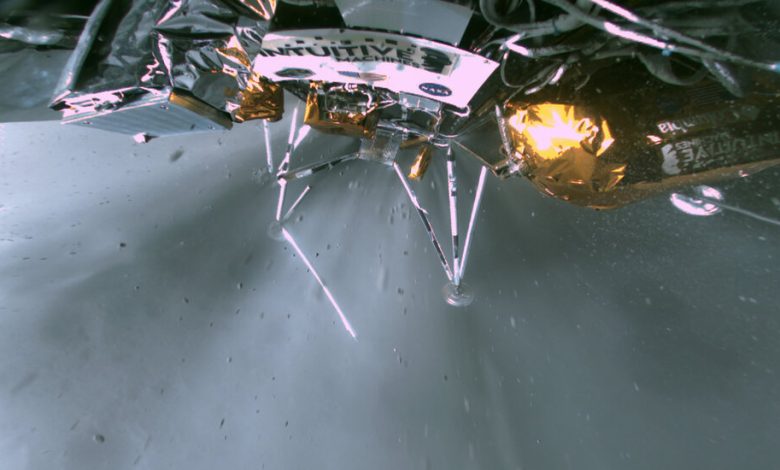Odysseus Moon Lander to Power Down, With Aim to Extend Time on Surface

Odysseus is not dead yet. But it will soon be time to say, “Good night, moon lander.”
Last week, Odysseus, a privately built robotic lunar lander, became the first American spacecraft to set down on the moon in more than 50 years, and the first nongovernmental effort ever to accomplish that feat.
But like the Homeric Greek hero it was named after, the lander has not had an easy journey with a neat happy ending.
In a news conference on Wednesday, Intuitive Machines, the Houston-based company that built Odysseus, said the spacecraft continued to operate, but that it would be put into a planned shutdown later on Wednesday.
“We’ve conducted a very successful mission,” said Steve Altemus, the chief executive of Intuitive Machines.
The extension of the spacecraft’s lifetime was the latest twist in the mission’s timeline, after the company suggested earlier this week that the lander’s operations might cease on Tuesday, then said that day that the vehicle could have as much as 20 hours of remaining battery life.
Uncertainty about the state of Odysseus has persisted since Thursday, when the rover reached the moon. For several anxious minutes that evening after the time of landing passed, Intuitive Machines flight controllers waited for a radio signal confirming the lander’s safe arrival at its destination in the moon’s south pole region. When the signal was detected, it was faint, indicating that the spacecraft’s main antennas were pointing away from Earth.
The next day, Intuitive Machines officials disclosed that Odysseus had toppled over after hitting the ground harder than planned. Instead of making a perfectly vertical landing, Odysseus had still been moving sideways as it touched down.
Engineers toiled over the weekend, trying to speed up the communications with Odysseus and retrieve data from the spacecraft. Originally, the mission was set to last nine or 10 days, until the sun set on the solar-powered spacecraft. Instead, it looks like Odysseus will survive about six days on the moon.
Odysseus might wake up again in a few weeks. Though it was not designed to survive the frigid cold of lunar night, the electronics could still revive when the sun next shines on the solar panels. A Japanese lunar lander, also solar-powered, did revive over the weekend after it made it through lunar night.
This is a developing story that will be updated as more information is announced.




